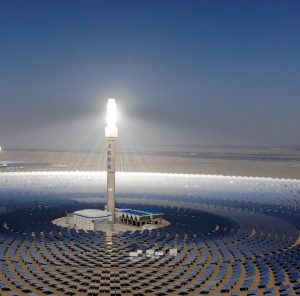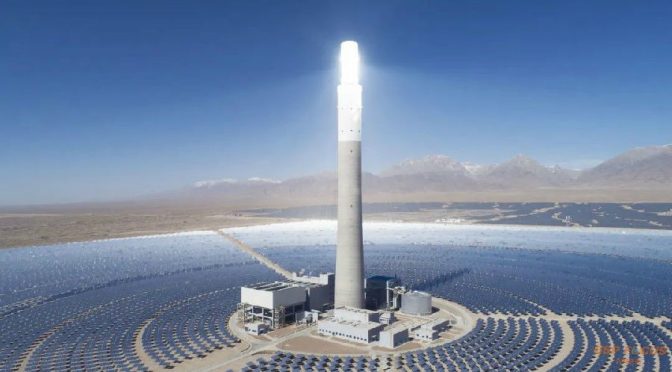The future of renewable energy is looking brighter than ever, thanks to the emergence of high-efficiency concentrated solar power (CSP) technology. As the world grapples with the urgent need to transition from fossil fuels to clean energy sources, CSP has the potential to play a significant role in reshaping global energy markets. With its ability to generate electricity on a large scale, store energy for use when the sun isn’t shining, and integrate seamlessly with existing power grids, CSP is poised to make a lasting impact on the way we power our lives.

CSP technology works by using mirrors or lenses to concentrate sunlight onto a small area, typically a tower filled with a heat-transfer fluid. This fluid is then heated to extremely high temperatures, which can be used to generate steam and drive a turbine, producing electricity. The key advantage of CSP over traditional solar photovoltaic (PV) panels is its ability to store energy in the form of heat, allowing for electricity generation even when the sun isn’t shining. This makes CSP a more reliable and consistent source of renewable energy, capable of meeting the demands of modern power grids.
The global impact of high-efficiency CSP on energy markets is already being felt, with several large-scale projects coming online in recent years. In 2018, the Noor Ouarzazate complex in Morocco became the world’s largest CSP plant, with a total capacity of 580 megawatts (MW). This ambitious project has not only helped Morocco reduce its dependence on fossil fuels but has also positioned the country as a leader in renewable energy. Similarly, the Ivanpah Solar Electric Generating System in California, which boasts a capacity of 392 MW, has been a shining example of CSP’s potential in the United States.
As the cost of CSP technology continues to decline, its adoption is expected to accelerate in the coming years. According to the International Renewable Energy Agency (IRENA), the global installed capacity of CSP could reach 1,000 GW by 2050, up from just 6 GW in 2020. This rapid growth is projected to be driven by countries with abundant sunlight and large energy demands, such as China, India, and the United States. In fact, China has already set an ambitious target of 5 GW of CSP capacity by 2020, as part of its broader commitment to increasing its share of non-fossil energy sources.
The widespread adoption of high-efficiency CSP technology has the potential to transform global energy markets in several ways. Firstly, it can help to diversify the energy mix and reduce dependence on fossil fuels, thereby mitigating the risks associated with price volatility and supply disruptions. Secondly, CSP can contribute to energy security by providing a stable and reliable source of electricity, particularly in regions with high solar potential. Lastly, the growth of the CSP industry can create new jobs and stimulate economic development, particularly in countries with abundant solar resources.
However, the successful integration of CSP into global energy markets will require continued investment in research and development to further improve efficiency and reduce costs. Additionally, supportive policies and regulatory frameworks will be needed to create a level playing field for CSP and other renewable energy technologies. This includes addressing challenges related to grid integration, land use, and environmental impacts.
In conclusion, the global impact of high-efficiency concentrated solar power on energy markets is set to be profound, as the technology continues to mature and gain traction around the world. With its unique ability to generate and store clean energy on a large scale, CSP has the potential to play a pivotal role in the global transition to a more sustainable and secure energy future. As countries and industries continue to invest in and adopt this promising technology, the future of renewable energy looks brighter than ever.


